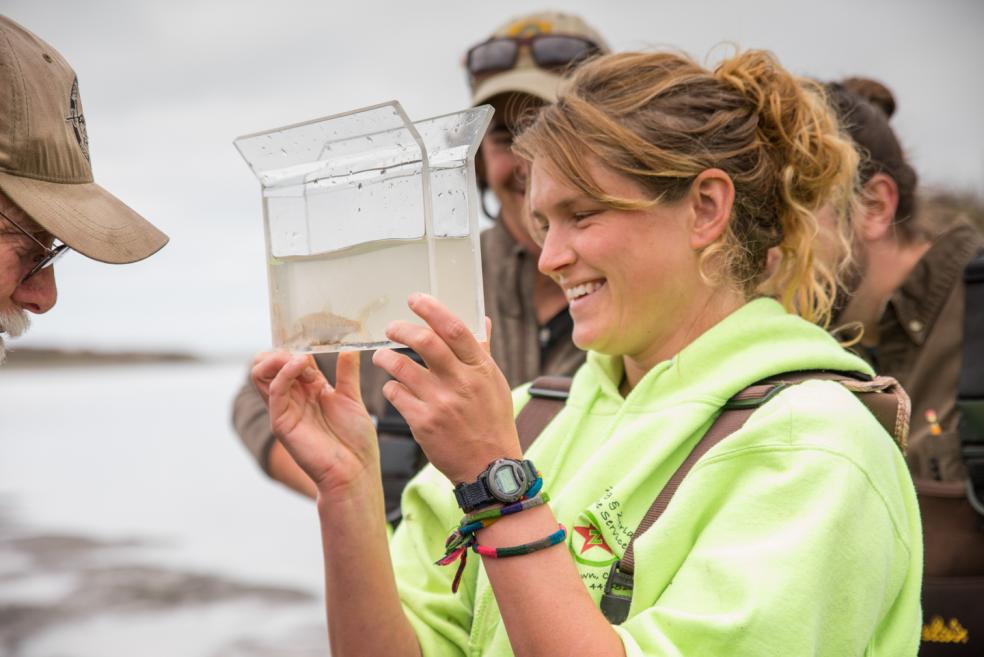
When Fisheries Biology Professor Darren Ward’s students dipped their nets into the shallow water, they pulled up three rare finds: tiny coho salmon, Chinook salmon, and a tidewater goby—all listed under the Endangered Species Act, all seeking refuge in the muddy water.
That discovery, made a decade ago, revealed that these species were present and seeking calmer water away from the river’s main channel.
Ward and his students are part of a years-long effort to restore critical salmonid habitat along the river. The Baduwa’t Estuary Restoration project, a sweeping effort led by CalTrout, is re-creating thousands of square meters of slow-water habitat, which are havens for baby salmon and other native species.
The need is urgent. In California, 90% of wetlands—critical habitat for salmon—have been lost, according to NOAA.
“When slow water habitat is in short supply, the survival rate of coho salmon goes down,” Ward said.
Juvenile salmon avoid fast water. They often hide in log jams, small tributaries, and floodplain ponds.
“There is not much floodplain habitat for fish in the lower Mad River,” Ward explained. “So when flows are high during winter, the fish do not have many options to escape the fast water in the main channel. The restoration project added a large area of slow-water off-channel habitat that provides a refuge for fish during high flows.”
The restoration project, completed in late 2022, brought back more than four acres of habitat for young fish to feed and grow. Fish rapidly moved into the restored site.
Since 2023, Humboldt researchers have found more than 15,000 fish from 17 different species, including coho salmon, Chinook salmon, steelhead trout, and cutthroat trout. Their data also shows the fish are using the restored areas, and coho salmon fry in the new habitats were 20% bigger than fish outside them, according to CalTrout.
Mary Burke, CalTrout North Coast regional manager, says that forming a partnership with Ward has turned this project site into a living laboratory where the students’ experience contributes to the project team’s understanding of the site.
“We were able to hire the Ward lab for project monitoring and each time we were as excited as anyone to see the Ward crew find many juvenile salmon and also fish that we didn’t expect, like pipefish,” Burke adds. “At CalTrout we are thrilled that students will carry forward the knowledge and experience of restoration in this exceedingly special place, the Baduwa’t estuary.”
Ward began bringing students to the site in 2015 to conduct pre-project sampling, when the restoration was still in the planning phase. He’s brought students back to the site almost every year to help monitor fish and water quality.
“We sample fish every time we go out, so it has been neat to see the changes in the fish community through time as the habitat was restored.”
Ward also hired student assistants to conduct monthly visits to the site to tag juvenile salmon so they can track their movement and growth.
Ongoing monitoring at the Baduwa’t Estuary lets Ward’s students witness restoration results firsthand while building skills and connections that prepare them for future careers in conservation.
“There’s nothing like getting out in the water—and mud—and seeing fish using a site to get excited about habitat restoration,” he said.